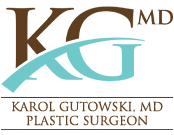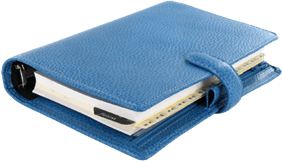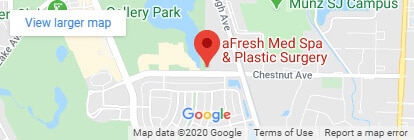Facelift – Rhytidectomy in Greater Chicagoland (Oakbrook)
OVERVIEW
The gold standard in dramatic age reversal has long been the facelift, which lifts and tightens the entire face. The aged and saggy skin, muscle and fat are repositioned to restore a youthful and refreshed look. Lines, wrinkles, bags and droopiness are all addressed. Our surgeons believe in a more realistic, natural-looking facelift and works closely with the patient to achieve the desired look. The ultimate goal of the facelift is to erase years off of the patient’s face and restore lost confidence without the face appearing overly tight or worked on.
REVIEWS
SURGICAL TECHNIQUE
The technique used during a facelift is dependent on the patient’s facial features and conditions. Most surgeons will always aim for the less invasive technique, but some patient cases are severe and will require internal tissues, fat and skin to be manipulated. Patients must also understand the procedure in detail, including the level of invasiveness, placement of incisions, what layers of tissues will be corrected, and what risks may be associated with the surgery before moving forward.
SKIN-ONLY FACELIFT?
Also referred to as the cutaneous facelift, this technique removes excess and loose skin to create a tightened look. The remaining skin is repositioned to lift sagging cheeks and jowls. It also improves the profile along the jaw line. With this facelift technique, the muscles or fat tissues are left untouched. As the treatment focuses on the skin only, recovery is quick. This is ideal for those who still have good tone muscle and distribution of fat, but find the skin losing elasticity in some areas.
TRADITIONAL FACELIFT (SMAS)
SMAS is the superficial musculoaponeurotic system, which is a muscle complex that is primarily active when it comes to facial expression. With normal wear-and-tear due to age, gravity and personal habits, muscle tissue loses its form and becomes displaced significantly for those over 50. This particular facelift is considered the standard when it comes to this cosmetic procedure. With lengthy incisions on the side of the face, from the temple to the lower hairline behind the ear, the skin will be peeled and lifted to reshape contours. If there is excess fat and skin, these will also be removed.
DEEP PLANE LIFT
For those who have severe cases of drooping and skin folds that are normal with aging and extensive sun exposure, a deep plane lift may be the best approach. This is especially true for those whose facial profiles need extensive reshaping on areas that typically have the volume and tight contours. This involves a highly specialized skill set and the plastic surgeon must be carefully selected as the nature of procedure has a high chance of damage to the facial nerves.
MINI FACELIFT
Also called as a short-scar facelift because of the shorter incisions made, a mini lift is a quick treatment that corrects the middle and lower face. Many patients initially consider this technique, but this doesn’t correct any severe issues and usually renders short-term results. Patients who undergo this procedure are most likely to also stage a full facelift as a final step to fully rejuvenate and reshape the face to its youthful curves.
DURING/AFTER SURGERY
All facelift procedures are performed in an accredited surgical facility with general anesthesia. Even though this is considered an outpatient procedure, there are some cases where the patient stays overnight for monitoring. It is normal to experience bruising and swelling after the surgery, and patients will feel as if their face is being pulled tight. This subsides within a couple of weeks. Optimal results will be evident after several months. It is important that activities are limited to help create a safe and quick healing.
FACELIFT FAQS
NON-INVASIVE TECHNIQUES?
Cosmetic surgery is constantly evolving and always finding ways to minimize the invasiveness of procedures. There are countless options that are considered less invasive than a facelift, including wrinkle relaxers such as BOTOX®, injectable fillers, microdermabrasion and chemical/laser peels. These alternatives aim to correct signs of aging such as wrinkles, as well flatten and soften folds and contours. The effects, while effective, are often short-term lasting about 6 months to a year. Although these procedures can be safely repeated, for some, a facelift may be a better, more permanent option.
HOW NATURAL?
Immediately following a facelift procedure, the patient will feel tightness and a pulling sensation. This is normal as the facial tissues, skin and muscle adjust to their new positions. It is important to choose a reputable plastic surgeon that has years of experience in facial cosmetic surgery. A doctor with experience in facial surgery will create natural, smooth results that will last for years to come.
VISIBLE SCARS?
A traditional facelift requires a long cut from the temple to the lower hairline, but the scars will be well concealed within the hairline and natural creases on the face. With the lesser invasive techniques, the scars heal pretty well and will almost be completely invisible to the naked eye.
BEST AGE?
Anyone can consider a facelift as soon as evidence of aging starts taking a toll on the skin. Generally, patients who are age 50 to 70 consider a facelift. Personal habits and environmental conditions can impact the skin and there are patients who are only 40 that are also good candidates for a facelift.
RELATED PROCEDURES
[xyz-ips snippet=”Face-Procedures”]





 PLAN YOUR PROCEDURE
PLAN YOUR PROCEDURE




